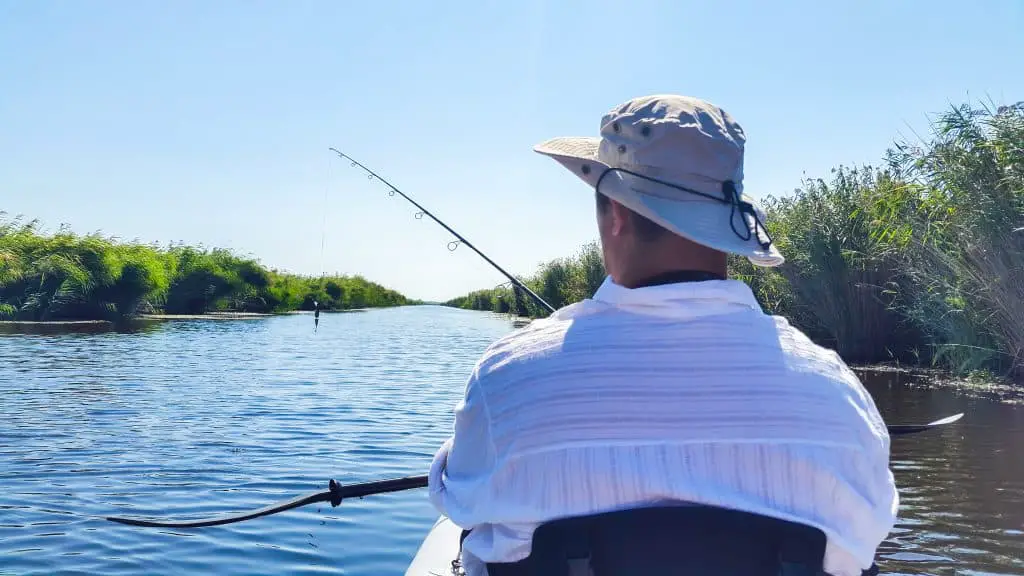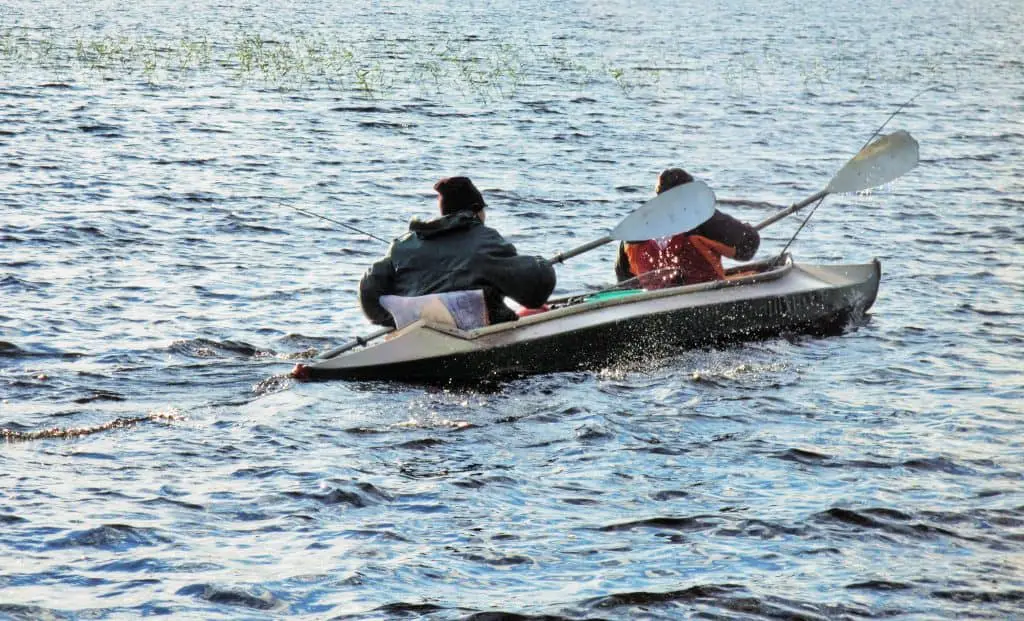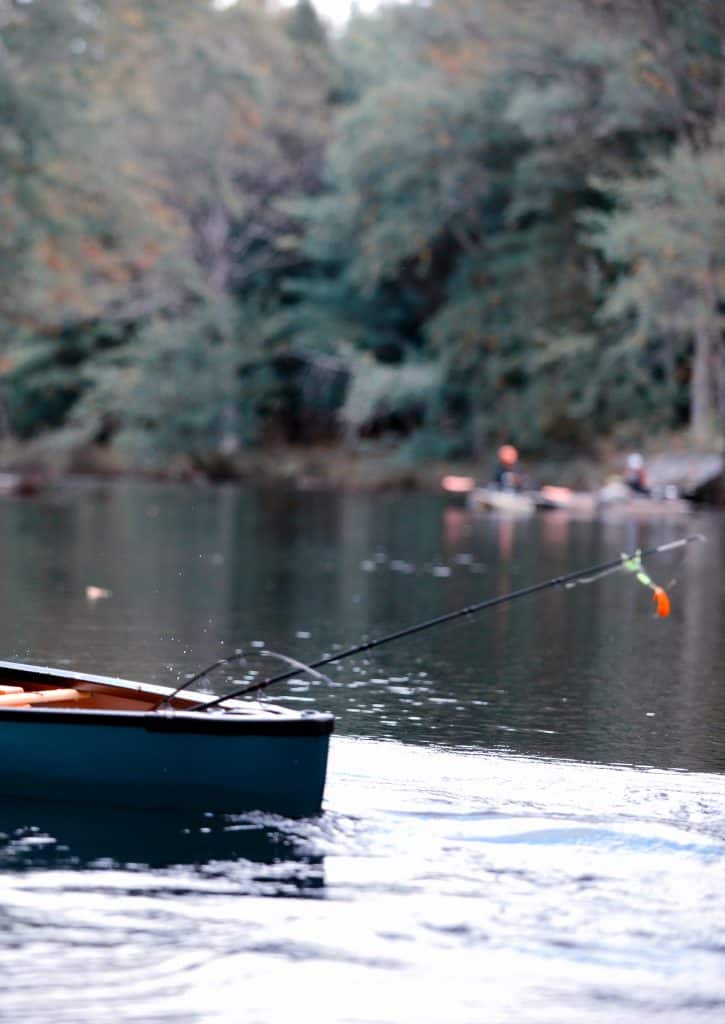There has been a heated and unending debate on the differences between fishing kayak vs. canoe. Some aren’t aware of the disparity between these two while others prefer kayaks over canoes or vice versa.
However, both are excellent water vessels used by most fishermen and women who love fishing afloat. It is a common thing to see one being preferred over another. Canoes are heavier and bigger than kayaks and come with wide frames and open tops. Kayaks are lighter and smaller. They are sleeker and are meant for recreation and speed.

The Main Differences between Fishing Kayaks and Canoes
The history of canoe and kayak fishing dates back to thousands of years and each side has many enthusiasts and defenders. While some prefer speed and sexiness, others opt for utility and comfort. What is your preference?
Kayaks and canoes seem similar but there are tangible differences between them that make each suitable for the environment it is used in. Canoes when compared to vehicles, are considered SUVs and minivans. Kayaks are likened to sleek and sexy sports cars. Let’s see how you can identify one from the other.
1. Hollowness
Kayaks and canoes have been crafted differently. Canoes come with well-dug-out spaces on the inside. This makes it possible to be used by more than one person. Sometimes, the canoes are fitted with horizontal benches to act as seating places. These can take 2 to 5 people. Others are left empty to kneel or sit within.
Kayaks aren’t that hollow. They either have cockpits or covered tops. Others come with flatter tops but modern kayaks have comfortable seats to take one or two people.
2. Paddles
The paddles of kayaks have two blades on each end. You are supposed to row on alternating sides. Kayak paddles are long and will be raised higher as you paddle. Canoes have shorter yet single-bladed paddles. You only use one end when paddling a canoe and row on one side. But, two people can seat in the canoe and row on opposite sides to make it move faster.
Some canoes will however use long paddles on either side. But they still maintain single blades. This means that the technique of maneuvering a kayak is different from that for maneuvering a canoe.
3. Design
Canoes exist in different types but the commonest is the Canadian style or recreational canoes. They are between 13’’ and 17’’ long. The sides of canoes are taller and sit high on water compared to kayaks.
Some kayaks have open tops and are commonly referred to as sit-on-top kayaks. Most of them have closed cockpits and the kayaker will sit inside. The kayak will cover their legs. Kayaks are more versatile.
4. Comfort
Because of their open tops, it is easier to climb into a canoe than a kayak. You can use the side of the canoe or a dock nearby to steady then stand up the moment you get inside. For a kayak, you have to slide your legs in the cockpit as you maintain balance to avoid tipping the boat.
Some kayak cockpits have back support for those fishing longer. Canoes allow for freedom of movement because of their open-top designs. Kayakers are confined to cockpits.

5. The Splashes
How wet you get on either a kayak or a canoe will depend on so many factors. Overall, you will be dryer in a canoe than you will in a kayak because you will be seating high above the surface of the water.
But in high waves and open water, kayaks will be ideal. Their cockpits are closed and will keep water out. Rough waves will wash over your boat. Some kayaks have spray skirts to counter any water seepage.
Canoes don’t capsize easily but modern designs of the two are more stable. In case there is a rollover, a kayak can be righted.
6. Stability
Canoes are more stable compared to kayaks but the latter will be quicker and boast more ease of maneuverability. Kayaks are narrower and have the sterns and bows curved upwards slightly. You won’t have much of the hull in water which means you have minimal resistance as you paddle.
Some kayaks have skegs ad rudders to help steer them. They have low centers of gravity so you use led effort to paddle every stroke. Kayas have better tracking because of the double-sided paddles and you mustn’t shift your body’s position to maintain a straight kayak.
7. Gear Storage
Canoes are known for their great flexibility and wide decks that can store fishing gear, camping gear, and large coolers that will all be within reach. Kayaks have more than enough spaces but are below the deck and will be in highly waterproof cargo holders.
Some more space is behind the cockpit. However, gear accessibility will be a problem if you don’t plan properly.
8. Speed
Canoes need more energy to get to the speed of kayak because of their weight. They move at about 4 or 5 kilometers per hour. However, achieving and maintaining this speed is difficult in a canoe than it is in a kayak.
The extra paddling effort needed in a canoe makes it a problem to reach and maintain speed. You need more strength and endurance to get a canoe moving faster at the pace of a kayak. Kayaks on the other hand can manage 6 to 7.5 kilometers per hour depending on the experience of the kayaker.

Fishing Kayak vs Canoe – Conclusion
I didn’t get to list and explain the different types of kayaks and canoes but this will be up in separate posts. Fishing kayaks and canoes (as well as SUPs) are excellent ways to explore waters you couldn’t access from the shores or banks. They increase your chances of landing more fish especially if you are a skilled paddler and fisherman/woman at the same time.
Each has its features, characteristics, pros, and cons but it all drips down to personal taste and preference and the area you’d wish to comb. The two are affordable and durable. They make fishing trips more productive and enjoyable.